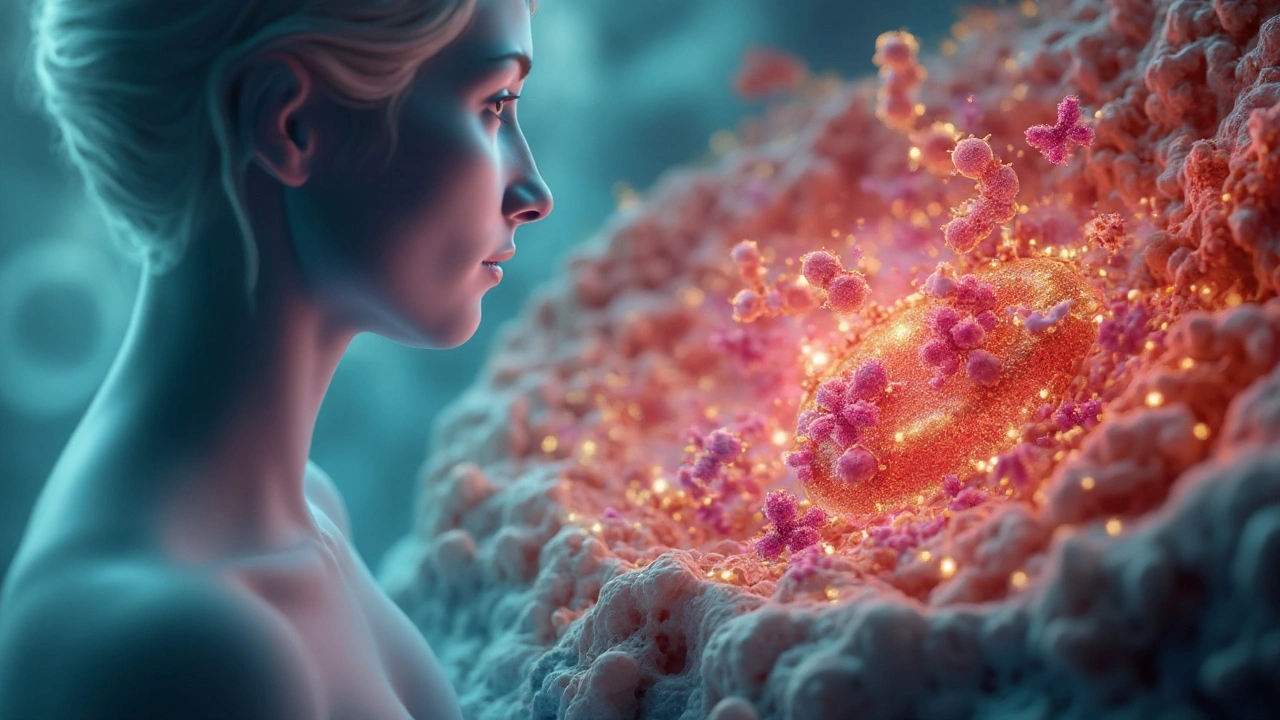Hormone Receptor‑Positive Breast Cancer: What You Need to Know
If you’ve just heard the term “hormone receptor‑positive breast cancer,” you might wonder what it actually means. In simple terms, the cancer cells have proteins called receptors that latch onto hormones like estrogen or progesterone. Those hormones can help the tumor grow, which is why doctors test for them right after a diagnosis.
Finding out your tumor is hormone‑positive is actually good news in many ways. It opens up a set of treatments that specifically block those hormone signals, and those therapies tend to have fewer harsh side effects than traditional chemo. Knowing the receptor status also helps doctors predict how the cancer might behave over time.
Understanding the basics
There are two main receptors doctors look for: estrogen receptors (ER) and progesterone receptors (PR). If the tumor tests positive for either, it’s called hormone‑receptor‑positive. Most of these cancers are also HER2‑negative, which means they don’t overproduce the HER2 protein. This combination (ER/PR‑positive, HER2‑negative) is the most common type of breast cancer.
Testing is done on a tiny piece of the tumor after surgery or a needle biopsy. The lab reports a percentage that shows how many cells have the receptors. Anything above 1% is usually considered positive and can guide treatment choices.
Treatment options you can discuss with your doctor
The first line of treatment often involves hormone‑blocking drugs. These come in two flavors: aromatase inhibitors (like letrozole, anastrozole, exemestane) and selective estrogen receptor modulators (like tamoxifen). Aromatase inhibitors are usually given to post‑menopausal women, while tamoxifen works for pre‑menopausal patients.
Many doctors also recommend a short course of chemotherapy before or after surgery, especially if the tumor is large. The good thing is that hormone‑positive cancers often respond well to endocrine therapy alone, so the chemo part can sometimes be skipped.
Radiation therapy is another piece of the puzzle. After a lumpectomy, radiation helps reduce the chance of the cancer coming back in the breast. It’s a standard step for most patients, regardless of hormone status.
Don’t forget about lifestyle tweaks. Regular exercise, a balanced diet, and limiting alcohol can all help lower recurrence risk. Some patients also find comfort in support groups or counseling to handle the emotional load.
Follow‑up appointments are key. Your doctor will likely schedule regular scans and blood tests to watch for any signs of recurrence. Staying on your hormone therapy for the full prescribed period—often five years, sometimes longer—is crucial for the best outcome.
In short, hormone‑receptor‑positive breast cancer gives you several targeted treatment paths that are generally effective and easier on the body. Talk openly with your oncologist about each option, ask about side‑effects, and make a plan that fits your life. Staying informed and proactive makes a big difference in how you handle the journey.
Exemestane Explained: How This Aromatase Inhibitor Works at the Molecular Level
A clear, evidence-backed breakdown of how exemestane shuts down estrogen production, who it helps, key trial data, dosing nuances, interactions, and side-effect management.

